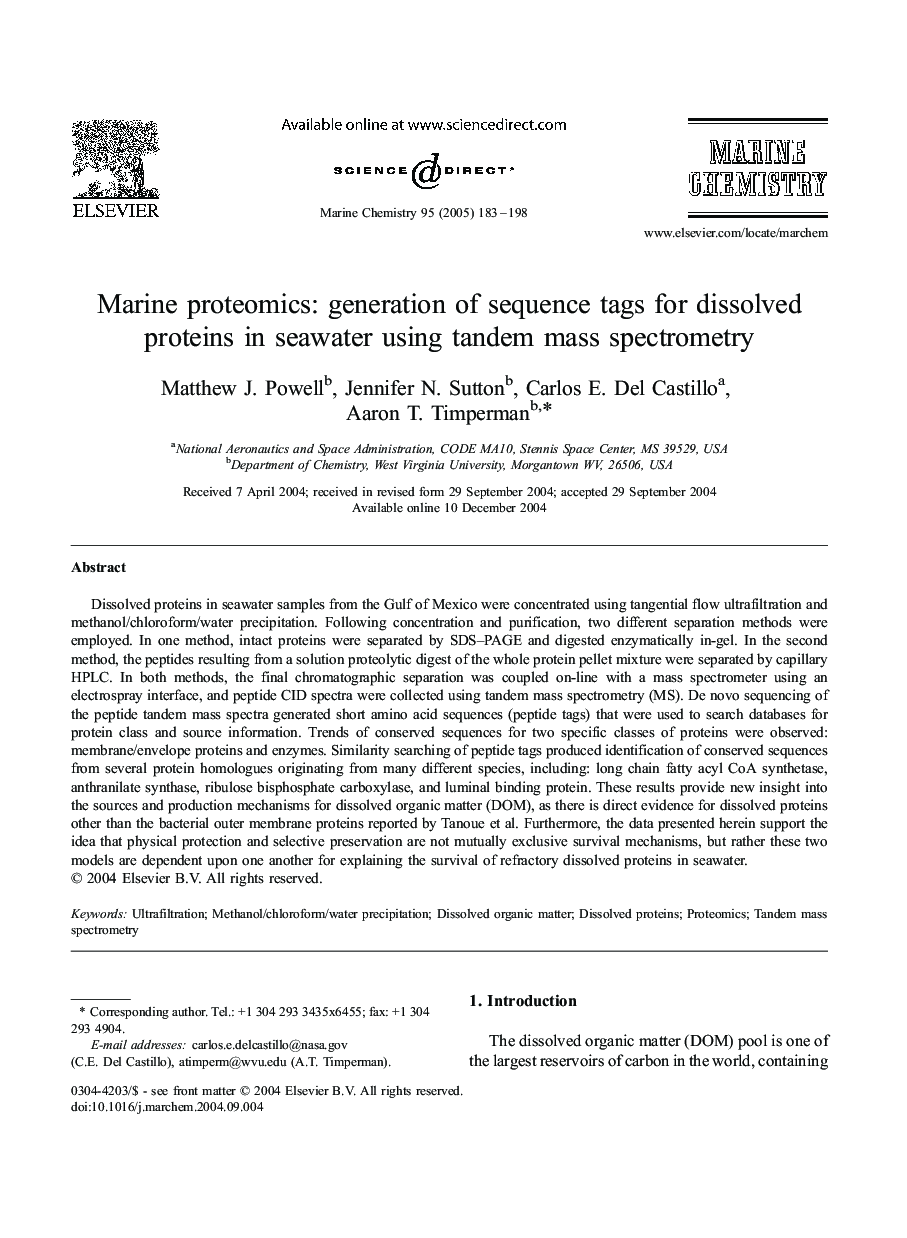| Article ID | Journal | Published Year | Pages | File Type |
|---|---|---|---|---|
| 9758383 | Marine Chemistry | 2005 | 16 Pages |
Abstract
Dissolved proteins in seawater samples from the Gulf of Mexico were concentrated using tangential flow ultrafiltration and methanol/chloroform/water precipitation. Following concentration and purification, two different separation methods were employed. In one method, intact proteins were separated by SDS-PAGE and digested enzymatically in-gel. In the second method, the peptides resulting from a solution proteolytic digest of the whole protein pellet mixture were separated by capillary HPLC. In both methods, the final chromatographic separation was coupled on-line with a mass spectrometer using an electrospray interface, and peptide CID spectra were collected using tandem mass spectrometry (MS). De novo sequencing of the peptide tandem mass spectra generated short amino acid sequences (peptide tags) that were used to search databases for protein class and source information. Trends of conserved sequences for two specific classes of proteins were observed: membrane/envelope proteins and enzymes. Similarity searching of peptide tags produced identification of conserved sequences from several protein homologues originating from many different species, including: long chain fatty acyl CoA synthetase, anthranilate synthase, ribulose bisphosphate carboxylase, and luminal binding protein. These results provide new insight into the sources and production mechanisms for dissolved organic matter (DOM), as there is direct evidence for dissolved proteins other than the bacterial outer membrane proteins reported by Tanoue et al. Furthermore, the data presented herein support the idea that physical protection and selective preservation are not mutually exclusive survival mechanisms, but rather these two models are dependent upon one another for explaining the survival of refractory dissolved proteins in seawater.
Keywords
Related Topics
Physical Sciences and Engineering
Chemistry
Chemistry (General)
Authors
Matthew J. Powell, Jennifer N. Sutton, Carlos E. Del Castillo, Aaron T. Timperman,
